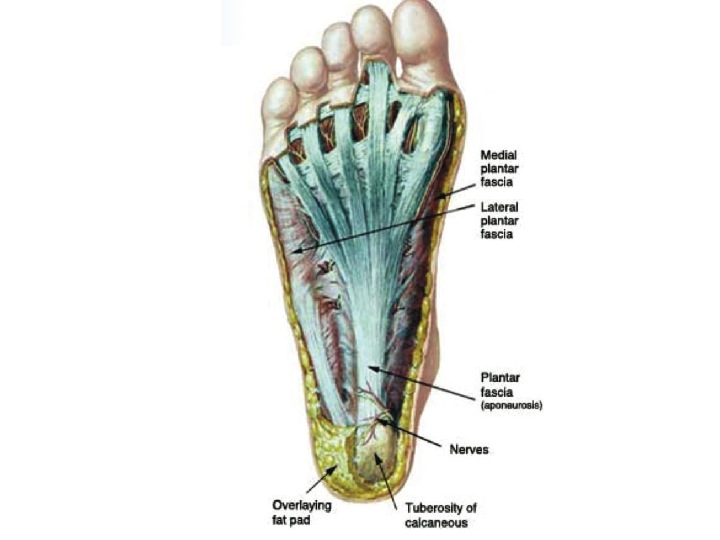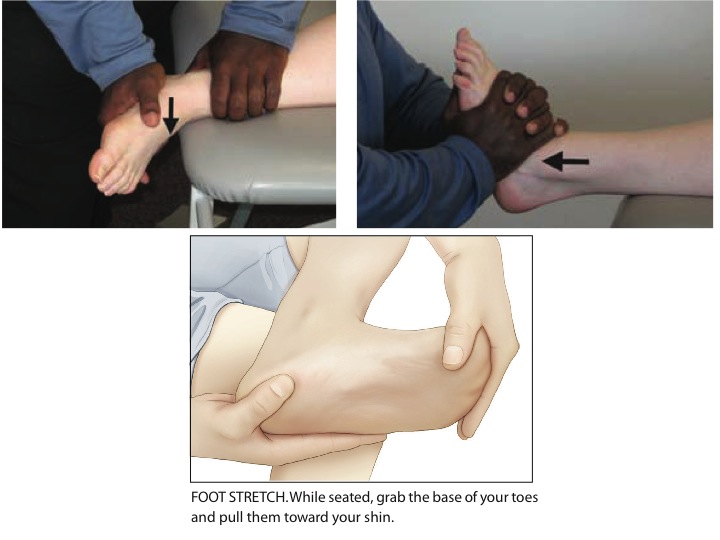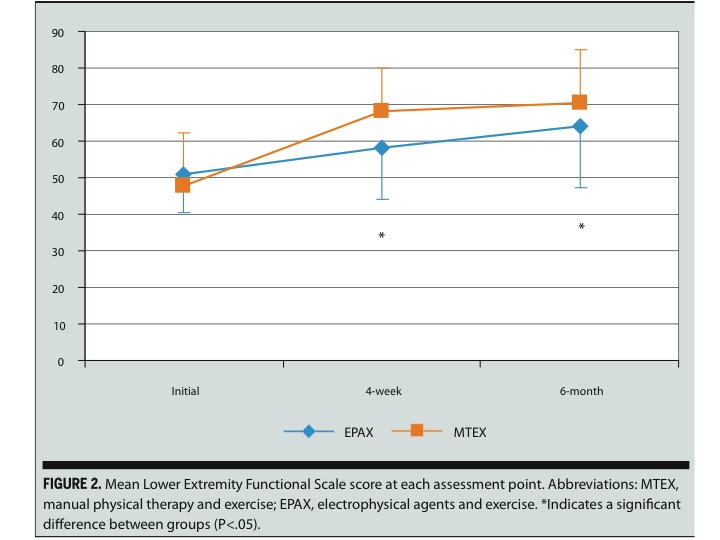Heel Pain (Plantar Fasciitis) Background
Plantar fasciitis/fasciosis is the most common cause of heel pain. Patient often complain of pain upon their first steps in the morning, sharp pain under the heel which may spread into the arch of the foot. These symp- toms are often worse on a return to standing or walking after a period of rest (sitting).
Previously thought to be an inflammatory condition, current research suggests the condition is a non inflammatory degenerative process more consistent with fasciosis. Further, authors noted 0 cases of inflammation in the tissues of 50 individuals with heel pain(3).
2 million individuals will experience heel pain each year and about 10% of people will experience heel pain at some point in their lifetime(6).
Heel Pain and Physical Therapy Treatments
Corticosteroid injections into the plantar fascia have been found to be ineffective, and may result in serious side effects including rupture(4,5). Systematic reviews report the risks of injections do not out weigh the benefits for these interventions(8).
A systematic review found extracorporeal shockwave therapy does not appear more effective than stretch- ing in reducing pain in patients with heel pain(9).
Clinical Practice Guidelines for the treatment of heel pain and plantar fasciosis recommend a multimodal program of Physical Therapy including manual therapy, stretching, taping, foot orthotics, and night splints(8).
Foot orthotics have been shown to reduce pain, decreasing loading, and improve short and long term function patients with heel pain(8).
Physical Therapy Evidence and Heel Pain
Anti pronation taping to the arch and heel for up to 3 weeks is supported by practice guidelines for pain reduction(8).
Grade A evidence is available for manual therapy interventions, including joint mobilization and manipulation and soft tissue mobilizations, of the lower quarter in patients with heel pain(8).
A systematic review by Brantingham et al. reported the effectiveness of these manual therapy interventions in a review of the medical literature(10).
Renan-Ordine et al. found greater improvements in pain and disability among patients with heel pain who received manual therapy and exercise compared to exercise alone(1).
Authors report greater short and long term improvements in pain and disability
using a manual therapy and exercise approach compared to passive modalities such as ultrasound and exercise(2). See graph.
Early studies on the impact of dry needling on heel pain have shown reductions in both pain and disability(7,8).
Exercise programs designed to restore flexibility to the leg, ankle, and foot, as well as, restore strength and control to the lower quarter are supported by the literature to reduce pain and abnormal loading at the foot.
When to seek Physical Therapy care
1. Renan-Ordine R, et al. Effectiveness of Myofascial Trigger Point Manual Therapy Combined With a Self- Stretching Protocol for the Management of Plantar Heel Pain: A Randomized Controlled Trial. JOSPT. 2011;41(2):43-50
2. Cleland, J. et al. Manual Physical Therapy and Exercise versus Electrophysical Agents and Exercise in the Manage- ment of Plantar Heel Pain: A multicenter RCT. JOSPT. 2009. 39(8):573-585.
3. Lemont H, Ammirati KM, Usen N. Plantar fasciitis: a degenerative process (fasciosis) without inflammation. J Am Podiatr Med Assoc. 2003;93:234-237.
4. Acevedo JI, Beskin JL. Complications of plantar fascia rupture associated with corticosteroid injection. Foot Ankle Int. 1998;19:91-97.
5. Sellman JR. Plantar fascia rupture associated with corticosteroid injection. Foot Ankle Int. 1994;15:376-381.
6. Crawford F, Thomson C. Interventions for treating plantar heel pain. Cochrane Database Syst Rev. 2003;
7. Cotchett, M. et al. Effectiveness of trigger point dry needling for plantar heel pain: A RCT. Phys Ther. 2014.
8. Martin, R. et al. Heel Pain – Plantar Fasciitis: Revision 2014. Clinical Practice Guidelines. JOSPT. 2014;44(11):A1-A23.
9. Landorf KB, Menz HB. Plantar heel pain and fasciitis. Clin Evid (Online). 2008;2008:1111.
10. Brantingham JW, Bonnefin D, Perle SM, et al. Manipulative therapy for low- er extremity conditions: update of a literature review. J Manipulative Physi- ol Ther. 2012;35:127-166.




